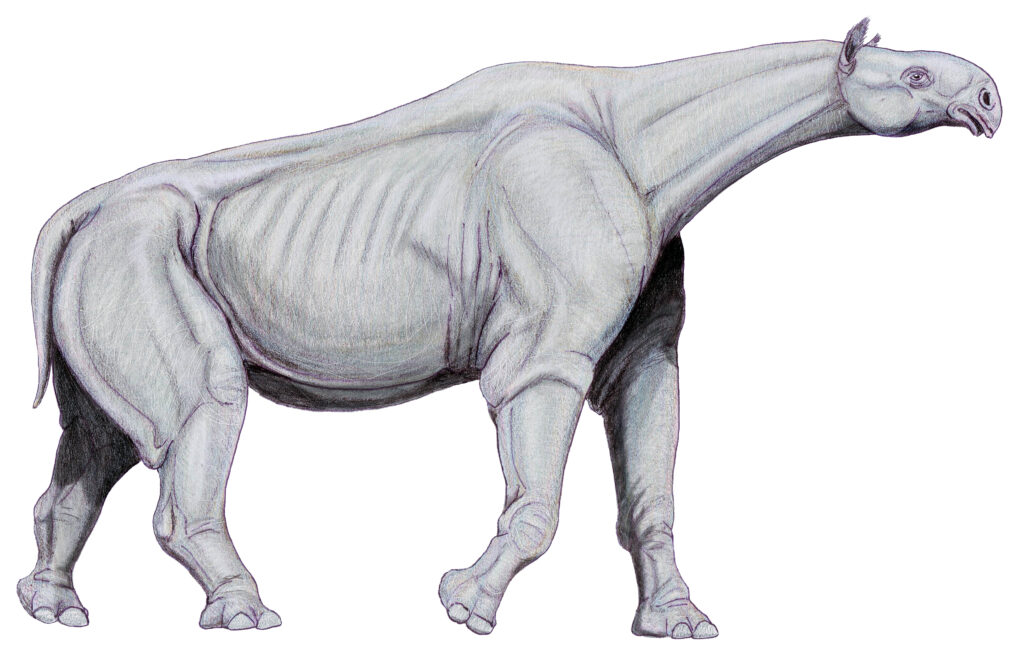In the vast timeline of Earth’s history, colossal creatures have come and gone, leaving behind only fossils to tell their stories. While dinosaurs often dominate our imagination of prehistoric giants, mammals have their impressive contenders. Among them stands Paraceratherium (formerly known as Indricotherium or Baluchitherium), the largest land mammal known to have ever existed. This massive hornless rhinoceros relative roamed Eurasia during the Oligocene epoch, approximately 34 to 23 million years ago, dwarfing even the fearsome Tyrannosaurus rex in sheer mass. Unlike the carnivorous dinosaur that terrorized the Cretaceous landscape, this gentle giant browsed on treetops with its impressive height and specialized anatomy. Let’s explore the extraordinary world of this prehistoric behemoth that represents the pinnacle of mammalian gigantism.
The Discovery and Naming Controversy

The story of Paraceratherium begins with a complex scientific journey marked by competing discoveries and naming disputes. Russian paleontologist Alexei Borissiak first described remains from Kazakhstan in 1915, naming his find Indricotherium. Nearly simultaneously, British paleontologist Clive Forster-Cooper discovered similar fossils in Baluchistan (now part of Pakistan), naming his specimen Baluchitherium. For decades, scientists debated whether these represented one or multiple species, creating confusion in scientific literature. Eventually, careful comparison of the fossils revealed they belonged to the same genus, with Paraceratherium becoming the accepted scientific name under the rules of taxonomic priority. This naming controversy illustrates the challenging nature of paleontological work, especially when dealing with fragmentary remains of species that lived millions of years ago across vast geographic ranges.
Size Comparison with T. Rex and Modern Animals

Paraceratherium’s dimensions were truly staggering, making it a titan among land mammals. Standing approximately 15-16 feet (4.8 meters) at the shoulder and potentially reaching 26 feet (8 meters) in length, it towered over most other mammals. Weight estimates range from 15 to 20 tons at the upper end, significantly outweighing Tyrannosaurus rex, which tipped the scales at roughly 8-9 tons. For modern comparison, an African elephant, today’s largest land mammal, weighs about 6-7 tons and stands around 13 feet tall. Paraceratherium could look down on giraffes, which reach about 18 feet in height, including their long necks. The creature’s shoulder height alone would allow it to peer into a second-story window of a modern building. This immense size gave Paraceratherium advantages in reaching high vegetation and likely protected most predators of its time.
Evolutionary Relationships and Family Tree
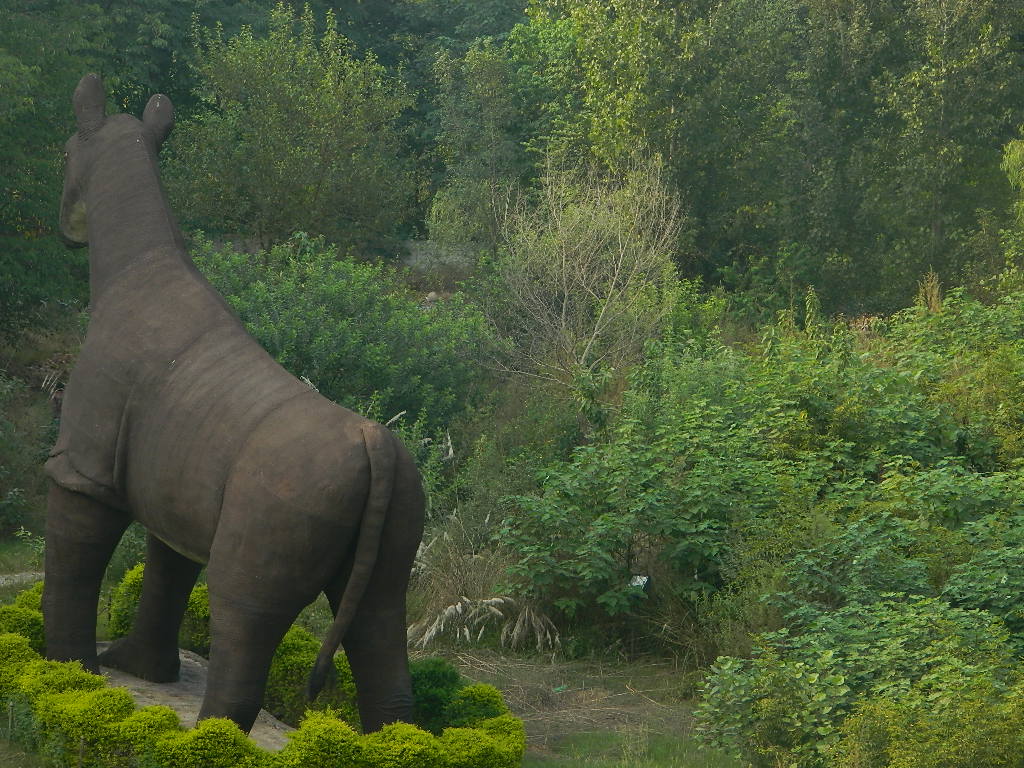
Paraceratherium belongs to the family Hyracodontidae within the order Perissodactyla (odd-toed ungulates), making it a distant relative of modern rhinoceroses, horses, and tapirs. Unlike its modern rhino cousins, Paraceratherium lacked horns completely. It evolved from smaller ancestors during a period when mammals were diversifying to fill ecological niches left vacant after the extinction of non-avian dinosaurs. The gigantism of Paraceratherium represents a fascinating example of evolutionary adaptation, demonstrating how mammals could evolve to extraordinary sizes under the right environmental conditions. Its family line, the indricotheres, thrived for millions of years before eventually becoming extinct without direct descendants. DNA analysis isn’t possible with fossils this ancient, so scientists must rely on anatomical comparisons to determine evolutionary relationships, placing Paraceratherium closer to rhinoceroses than to other modern mammals despite significant differences in appearance and lifestyle.
Physical Appearance and Anatomical Adaptations
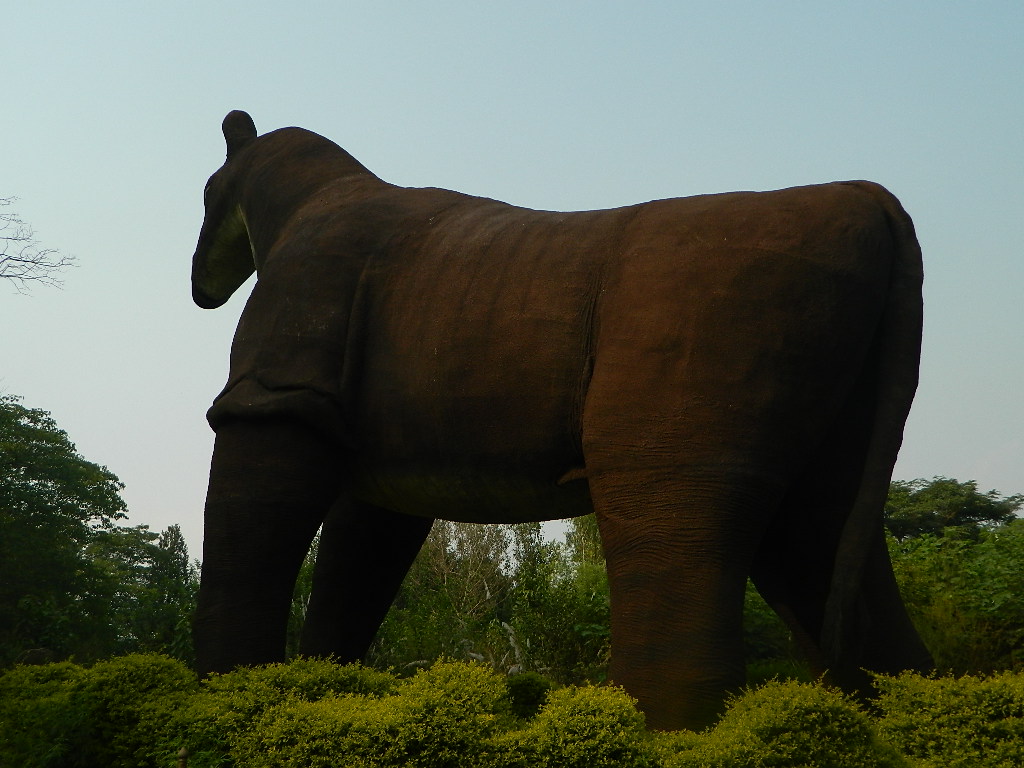
Paraceratherium possessed a distinctive appearance characterized by a relatively small head atop an extraordinarily long neck, supported by powerful, column-like legs. Unlike elephants with their trunks or giraffes with their extremely elongated necks, Paraceratherium evolved a moderate neck length but with massive vertebrae to support its browsing lifestyle. Its skull featured a distinctive concave profile and likely supported a prehensile upper lip similar to modern rhinoceroses, which would have been useful for grasping leaves and branches. The creature’s teeth were specialized for processing leafy vegetation, with large incisors for nipping and high-crowned molars for grinding tough plant material. Its legs evolved into straight, pillar-like structures to support its enormous body weight efficiently, similar to modern elephants. The feet were relatively small compared to the body size but featured multiple toes with small hooves, distributing weight effectively across various terrains. This combination of features created an animal perfectly adapted for reaching and consuming high vegetation in its environment.
Dietary Habits and Feeding Strategies

As a specialized browser, Paraceratherium primarily fed on leaves, shoots, and branches from tall trees that were inaccessible to most other herbivores of its time. Paleontologists have deduced its diet through several lines of evidence, including tooth wear patterns that indicate a softer plant diet rather than the tough grasses eaten by grazers. The creature’s immense height allowed it to access food sources up to 23 feet (7 meters) above the ground, creating an ecological niche with little competition. Its long neck and specialized prehensile upper lip would have been crucial for selectively plucking preferred vegetation and bringing it to its mouth. Fossil evidence suggests that Paraceratherium may have consumed hundreds of pounds of vegetation daily to sustain its massive size, potentially spending most of its waking hours feeding. This constant consumption would have profoundly impacted the ecosystems where these animals lived, potentially shaping forest structure and plant evolution through selective feeding pressure.
Habitat and Geographic Distribution
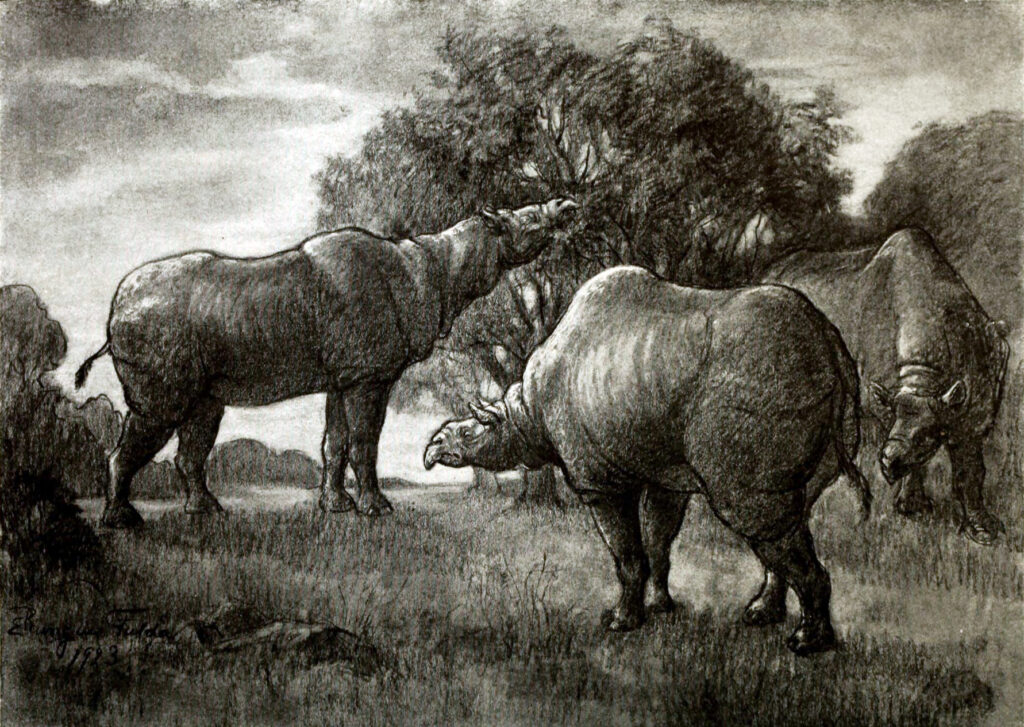
Paraceratherium roamed across a vast territory stretching from Eastern Europe through Central Asia to China during the Oligocene epoch. Fossil discoveries have confirmed its presence in modern-day Kazakhstan, Pakistan, Mongolia, China, and potentially other regions in between. The environments these giants inhabited were quite different from today’s landscapes in these regions. Paleoenvironmental evidence suggests they preferred woodland savanna ecosystems with mixed forests and open areas rather than dense jungles or open grasslands. During the Oligocene, Central Asia experienced a more moderate climate than today, with seasonal rainfall supporting diverse plant communities that could sustain such massive browsers. Geographic barriers like mountain ranges and water bodies likely influenced local populations, potentially leading to subspecies with slight variations across their range. The wide distribution of Paraceratherium fossils demonstrates its remarkable success as a species, adapting to various environments across a significant portion of the Eurasian continent.
Social Behavior and Reproduction
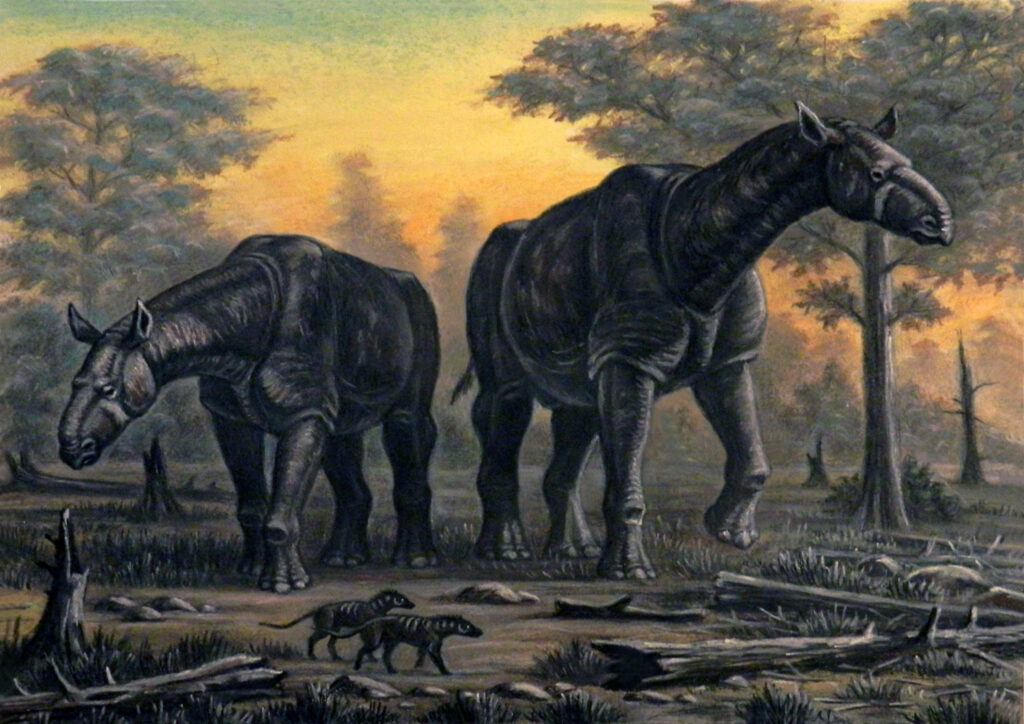
Scientists can only speculate about many aspects of Paraceratherium’s behavior based on fossil evidence and comparisons with modern relatives. Given their massive size and likely slow reproductive rate, Paraceratherium probably lived in small family groups or as solitary individuals rather than large herds. Females likely gave birth to only one calf at a time after a lengthy gestation period, similar to modern rhinoceroses and elephants. The young may have required years of maternal care before reaching independence, with sexual maturity potentially taking a decade or more to achieve. Size dimorphism in fossil specimens suggests males might have been larger than females, potentially indicating competition for mates through displays or contests rather than violent combat. The investment in fewer, well-developed offspring rather than numerous young aligns with the typical reproductive strategy of large mammals with few natural predators. Migration patterns may have existed, with animals potentially traveling seasonally to find optimal feeding grounds as vegetation availability changed throughout the year.
Predators and Defense Mechanisms
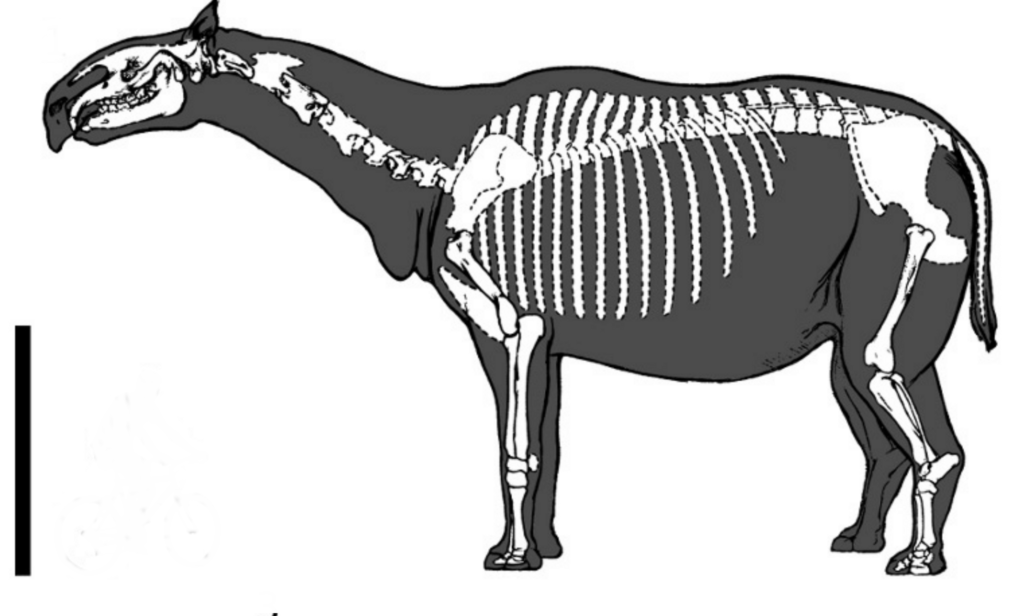
Despite its enormous size, Paraceratherium wasn’t completely immune to predation, particularly when young or vulnerable. The Oligocene landscapes housed several large predators, including giant hyaenodonts and entelodonts (sometimes called “hell pigs”), that might have targeted juvenile Paraceratherium. Adult specimens, however, would have been virtually untouchable due to their sheer mass and height. Their primary defense mechanism was simply their size, though they likely possessed acute senses of smell and hearing to detect potential threats. When confronted, adults could potentially have used their massive legs to stomp predators or even employed their weight as a battering ram in extreme situations. Young calves probably stayed close to their mothers for protection, similar to modern rhinoceros calves. The relative scarcity of predator-inflicted injuries on Paraceratherium fossils suggests that most adults lived their lives relatively free from predation pressure, with disease, accidents, and old age being more common causes of mortality.
Reasons for Gigantism: Why So Massive?

The extraordinary size of Paraceratherium represents a fascinating case study in evolutionary gigantism. Several factors likely drove this development, with access to high vegetation being a primary advantage. By evolving greater height, these mammals could browse on food sources unavailable to other herbivores, reducing competition. Additionally, larger body size provides better thermoregulation, as the decreased surface-area-to-volume ratio helps conserve heat in cool environments while providing thermal inertia against temperature fluctuations. Gigantism also offers protection against predation, as few carnivores could tackle a fully grown Paraceratherium. From a reproductive standpoint, larger females could potentially support larger offspring with better survival chances. The absence of other competing mega-herbivores in the same ecological niche allowed Paraceratherium to expand into this specialized role without significant competition. This combination of ecological advantages created the perfect evolutionary conditions for extreme gigantism, demonstrating how natural selection can produce extraordinary adaptations when the right environmental pressures exist.
Extinction: What Happened to the Giants?
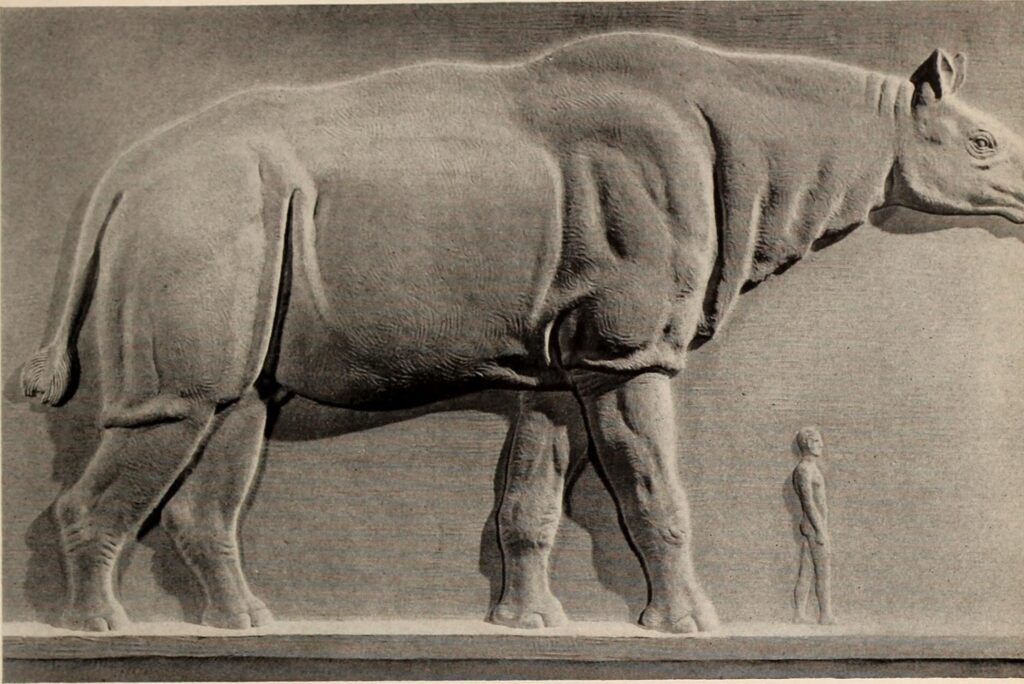
The decline and ultimate extinction of Paraceratherium occurred toward the end of the Oligocene epoch, approximately 23 million years ago. Several interconnected factors likely contributed to their disappearance. Climate change played a significant role, as the global cooling trend altered forest compositions and reduced the woodland habitats these browsers depended upon. The gradual formation of the Himalayas disrupted weather patterns across Asia, creating drier conditions less suitable for forests and more conducive to grasslands. As their preferred woodland habitats fragmented, Paraceratherium populations became increasingly isolated. Additionally, the evolution and spread of elephant ancestors (proboscideans) into Asia introduced new competitors that could efficiently process vegetation using different feeding strategies. The combination of habitat loss, climate change, increased competition, and the inherent vulnerability of specialized giant species with slow reproductive rates ultimately led to their extinction. The demise of Paraceratherium illustrates how even the most successful and impressive species can vanish when environmental conditions shift beyond their adaptive capacity.
Fossil Discoveries and Research Challenges

Studying Paraceratherium presents paleontologists with significant challenges, primarily due to the rarity and fragmented nature of fossil specimens. Complete skeletons are exceptionally uncommon, forcing scientists to reconstruct the animal’s appearance from partial remains discovered across different locations. The massive size of the bones creates logistical difficulties for excavation, transport, and museum display, often requiring specialized equipment and techniques. Dating fossils accurately presents another challenge, particularly in remote regions where many specimens are found. Political instability in some fossil-rich areas has periodically interrupted scientific fieldwork, limiting access to potential discoveries. Despite these obstacles, technological advances have enhanced research capabilities, with CT scanning allowing for detailed examination of internal bone structures and computer modeling enabling more accurate reconstructions of musculature and movement capabilities. International collaboration has become increasingly important, with scientists from different countries sharing findings to build a more comprehensive understanding of this remarkable prehistoric giant.
Comparison with Other Prehistoric Giants
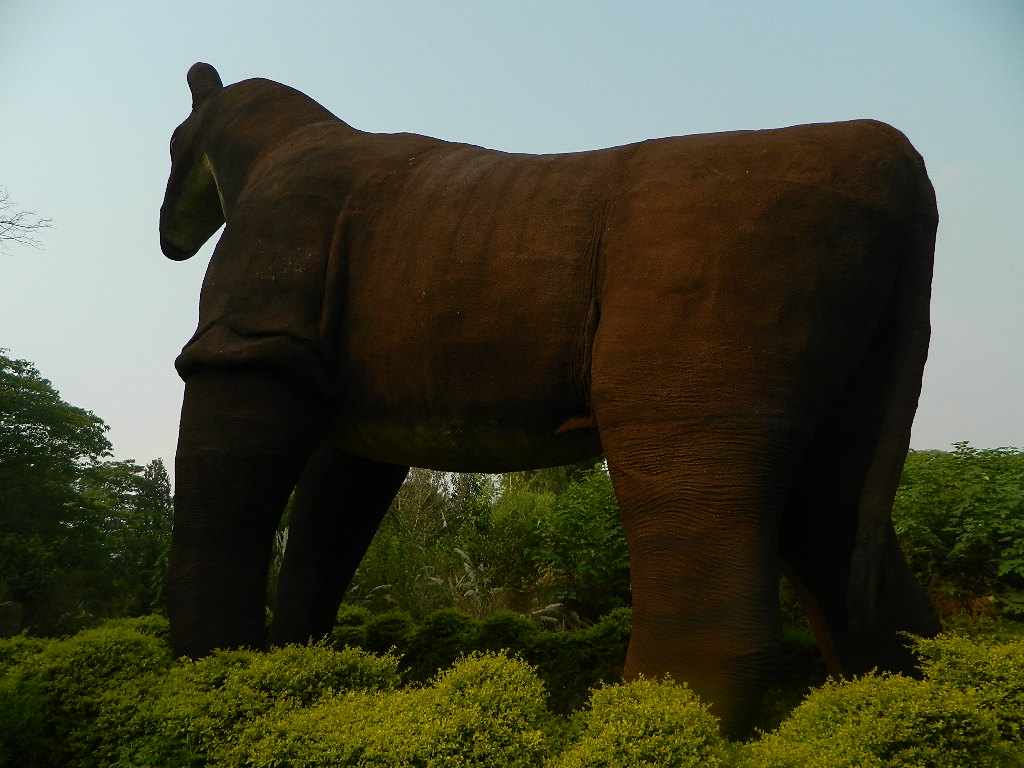
While Paraceratherium holds the title for the largest land mammal, it’s illuminating to compare it with other prehistoric giants across different animal groups. Among dinosaurs, the massive sauropods like Argentinosaurus and Patagotitan could reach lengths of over 100 feet and weights potentially exceeding 70 tons, dwarfing even Paraceratherium. However, comparing mammals to dinosaurs involves contrasting different physiological systems and evolutionary paths. Within the mammal family, Paraceratherium’s closest competitors for size include the proboscidean Palaeoloxodon namadicus (straight-tusked elephant) and the massive Steller’s sea cow among marine mammals. Megatherium, the giant ground sloth, reached impressive dimensions but still fell short of Paraceratherium’s mass. Interestingly, these mammalian giants evolved independently across different continents and periods, demonstrating convergent evolution toward gigantism under suitable conditions. Each of these enormous creatures evolved specific adaptations to their respective environments, with Paraceratherium representing the pinnacle of mammalian adaptation to a high-browsing niche in the woodlands of ancient Eurasia.
Modern Significance and Popular Culture
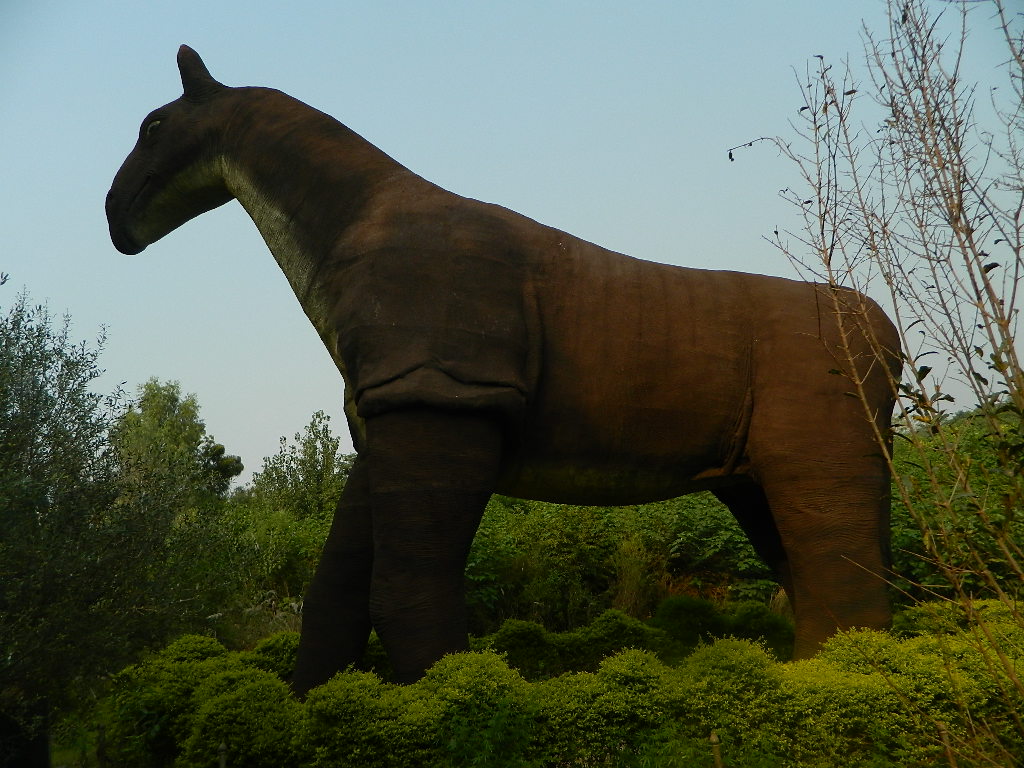
Paraceratherium has captured the public imagination as an emblem of prehistoric megafauna, appearing in museums, documentaries, and popular media worldwide. Its portrayal in the BBC documentary series “Walking with Beasts” introduced millions to this lesser-known giant, helping elevate its profile beyond academic circles. As a subject of scientific study, Paraceratherium provides valuable insights into evolutionary processes, particularly regarding the upper limits of mammalian body size and adaptations to specific ecological niches. For conservation biologists, understanding the extinction of these giants offers a perspective on the vulnerability of today’s large mammals, many of which face similar threats from habitat fragmentation and climate change. Museum exhibitions featuring Paraceratherium reconstructions serve as powerful educational tools, helping visitors comprehend biodiversity changes over geological time. The creature’s immense size makes it particularly effective for demonstrating scale in evolutionary history, giving people a tangible connection to Earth’s remarkable prehistoric past and highlighting how dramatically mammalian life has changed over millions of years.
Conclusion

Paraceratherium stands as a testament to the extraordinary diversity of life throughout Earth’s history. This colossal mammal, browsing peacefully across the woodlands of ancient Eurasia, represents the upper limits of what is physically possible for land mammals under ideal evolutionary conditions. Its discovery and study have expanded our understanding of mammalian evolution, ecological adaptation, and the complex factors that lead to both the rise and fall of species. Though long extinct, Paraceratherium continues to inspire wonder and scientific inquiry, reminding us that the familiar mammals of today—including humans—are merely the latest chapter in a much longer evolutionary story that has included giants that could look dinosaurs in the eye. As we face contemporary biodiversity challenges, the story of Paraceratherium offers a valuable perspective on the delicate balance between evolutionary success and vulnerability to environmental change.

